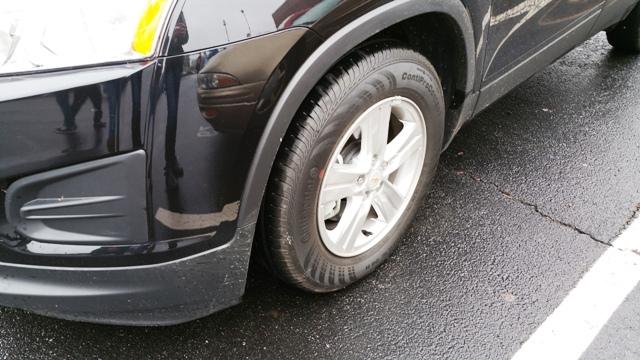Paranoia for the Survivalist: Crashes
One trick to avoid danger is to check your car tires before driving to make sure they are full of air and there is no visible damage.
March 30, 2015
One thing you must have thought about once in your life is, “What should I do if my car goes off a bridge?” “What should I do if I’m in a plane crash?”
Well, here is a guide that is sure to prepare you for any crash.
Crashes:
Car Crash
Car crashes vary: A crash can be a simple fender bender, or it could be a full head on collision; however, they can both be life threatening if the necessary safety precautions are not used. The first thing you should do when entering a car is to buckle your seatbelt. Even this simple action can be life saving. Afterwards, adjust your mirrors so everything can be seen pretty well; however, there will still be blind spots, so pay special attention to those when turning. Make sure there are no objects that can easily fly and hit you. Sit up straight in case of an airbag hitting you, as it can be dangerous if you are leaning against certain parts of the car. Also, make sure to check your car before driving to make sure there is no damage. Don’t give into distractions; even one second of looking away from the road can be deadly. Also, look all over the road and in the distance ahead of you so you can be prepared for any potential threat. If a crash is inevitable, slow down the car as much as possible and try to not get in any head on or side collisions. After seeing or being involved in a crash, call 911 and wait with the others involved until a police officer arrives.
Here is how to survive an accident as a pedestrian.
For information on how to survive a motorcycle crash, click the hyperlink.
Car Off a Bridge
Multiple sources say that the most important thing to do is stay calm. Panic can disorient you and may even cost you your life. Once the car goes over the bridge and hits the water, time is of the essence. You do not have much time and you will need every second to escape the vehicle. As soon as the car has made an impact with the water, unbuckle the seatbelt.
On the contrary, there are others who believe the seatbelt should be kept on: see step two of this step by step process for more information.
If the impact caused one of your windows to shatter, escape out of that one. If not, roll down the windows immediately. If the windows still will not roll down, choose one close to you to break. As the Popular Mechanics Article says, a LifeHammer is a really good tool to do the job. Once the window is broken, let any children in the vehicle exit first before exiting yourself. However, if you could not break the window, you still have another chance. You can open the car door when the car is completely filled with water (because the pressure will be equal). You would need to be able to hold your breath very well in this situation.
Plane Crash
In many articles, it is said that after the crash, you only have 90 seconds to get out. After that time is up, a fire will engulf the whole plane. It is said that you have a better chance of survival if you are sitting near the exit.
A safety card is one of the first things you should pay attention to when boarding a plane. It will tell you what to do in case of an emergency and is very valuable information. Always read the safety card in case there is new information during different flights. Here is a step by step process in going into the break position in case of a crash. Put the oxygen masks on as soon as they fall down from above; you do not have a lot of time at all before you become oxygen deprived. It is also suggested to wear clothing that will protect you in events of being in, or running from, a crash. Once the plane has landed, cover your face with a cloth and get the children out; do not worry about the luggage. For good survival tips, check out page two of this website.
Train Crash
It is suggested to sit in an aisle seat about two cars up from the end; this is said to be the safest spot on the train.
When in a train crash or derailment, escape the train immediately; this can be through a door or a window. When jumping, look for a place that is somewhat soft to land in, like grass. It is suggested to jump when the train loses speed (like going around a curve). Once you jump, cover your head, but land where your whole body hits the ground, instead of just a certain part. Once you hit the ground, roll to weaken the impact.
Boat Sinking
When you first board a ship, know where everything is. This should include stairs, because it is unsafe to use an elevator during a sinking. Normally water fills from the lowest part of the boat first. From there, it steadily fills more and more of the boat. As a matter of fact, it took over an hour for the Titanic to sink. So, from there, you need to get to the topmost, or deck, of the boat as quickly as possible. Immediately look for a flotation device, such as a lifeboat. If worse comes to worse, jump off the boat—call out and swim toward a lifeboat; however, always look before jumping to be sure you do not hit anything or anyone.




